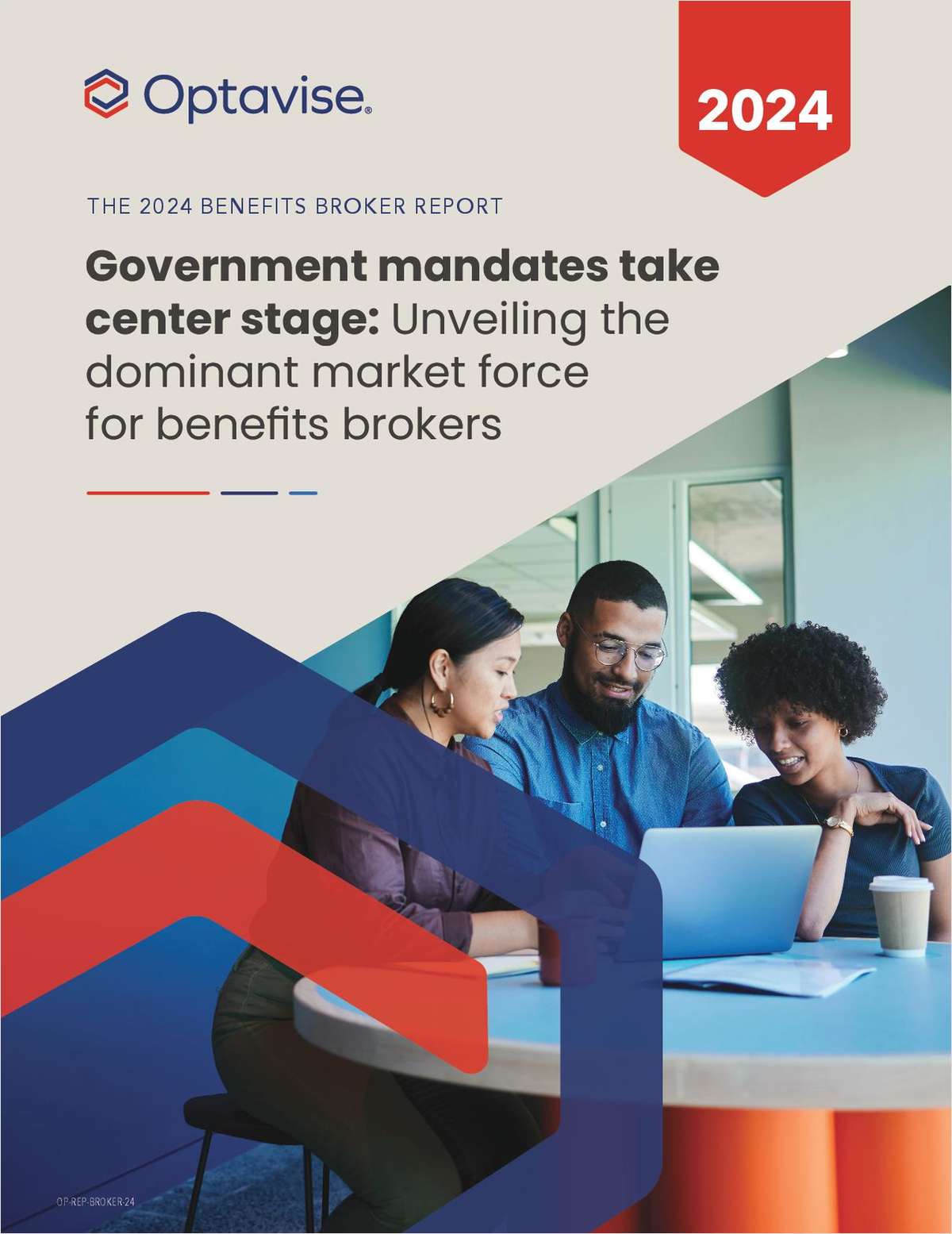Today's landscape has the potential to empower consumers while radicallychanging the way we envision and leverage employee benefits.Government regulation, spiralling healthcare costs unattached tooutcomes, big data, and a massive new generation joining theworkforce are the four main factors driving the future of non-wagecompensation. That future begins today. With careful considerationof these four factors, a new generation of healthy consumers iswithin reach.
|#1 Regulation and the ACA
The passing of the Affordable Care Act (ACA) in 2010 alreadyfeels light years away in some respects. In the brief time since,millions of Americans have taken advantage of the new baselinesthat the ACA set for medical insurance carriers. These includeeliminating pre-existing condition and lifetime maximum clauses,covering preventive services, providing more options for coverage,and helping us get the most from our premium dollars by requiringthat insurance companies spend the majority of dollars collected onhealth-related expenditures, rather than overhead costs likeadministrative, marketing, or cushy employee and clientretreats.
|Though the ACA is far from flawless or complete, even thosepolitically opposed to the Act would have a hard time denying thefact that millions of Americans have gained more choice ininsurance options through the creation of exchanges. More than12.7 million are now covered on publicexchanges while another eight million enjoy coverage under a privateexchange.
|These numbers will continue to grow as innovative companiesleverage the individual insurance market to offer additionalchoices to workers at better price points than they can obtainindependently. This vastly expanded network means more Americanshave the freedom to choose the price, insurance carrier andcoverage level that best suits their needs.
|All of that said, the ACA has not significantly reduced healthcare costs, which remain onerous and excessive. The lack ofmeaningful change in cost since the implementation of the ACA isworthy of additional debate. For me, it's best highlighted in arecent Kaiser Family Foundation 2015 Employer HealthBenefits Survey:
Most market fundamentals have stayed consistent with priortrends, suggesting that the implementation has not causedsignificant disruption for most market participants. Premiums forsingle and family coverage increased by 4% in 2015, continuing afairly long period (2005 to 2015) where annual premium growth hasaveraged about 5%. The percentage of employers offering coverage(57%) is similar to recent years, as is the percentage of workersin offering firms covered by their own employer (63%). |
Clearly, there's still work to be done on the ACA, but it'slasting baseline requirements have set a new foundation that's hereto stay.
|#2 The disconnect between health care costs andquality
Let's talk about the outrageous price tags for health careservices in this country. It's no secret that our health care costsare the highest in the developed world. We spend $8,713 annually in health care for each USresident, ahead of the number two country (Switzerland) by awhopping 40 percent and over 2.5 times that of the averagedeveloped nation. Most shockingly — and counter to some of therhetoric you might hear during this campaign season — we spend morein public health dollars per citizen than all other countries onthe list except Norway and the Netherlands. In fact, our publichealth spending alone would cover the entire public andprivate health spend per capita for countries like Australia,Japan, Ireland, Finland, France and many more.
|Surely, we must have better health care, health technology andpatient outcomes if we pay that much, you ask? Unfortunately, wedon't. A study by the influential medical journal The BMJ highlights some our issues. It concluded that medicalerror is the third leading cause of death in the nation —responsible for 251,000 deaths per year. That's more than suicide(41,000), firearms (31,000) and motor vehicle deaths (31,000)combined. In my own research on the topic, I wasastonished to discover that the highest rated hospital for safety in my home state ofCalifornia achieved a paltry 69 out of 100 successful outcomes.Simply put, we overpay for care that is at best mediocre, oftenunsafe, and at worst deadly.
|The health care industry is in need of fundamental change andthere's a real opportunity to disrupt the existing status quo.Increasing investment in smart people and companies trying to solvethis cost/quality disconnect are evidenced where I live in SiliconValley. Rock Health shows us that $8.8B (yes, that's billion) has beeninvested in digital health over the last two years alone. You canbet your bottom dollar that these investments will drive bigchanges to the system in the coming years, just as they havefostered and developed nascent technologies in other sectors.Investors, employers and consumers alike are seeking answers togain positive health outcomes that are less costly, more efficientand ethically-driven.
|#3 Medicare claims data
When CMS released Medicare claims data for the first time, itwas a move of unprecedented transparency and a huge win forentrepreneurs and data scientists looking for a way to help solvethe cost, value and quality dilemma. The data contains informationon services and procedures provided by over 986,000 physicians andhealth care professionals. This offers us insight and comparisonsof physicians, specialties, locations, types of medical servicesand procedures delivered, payment and submitted charges, andmore.
|Why is this a game changer? In today's society, data is king. Itis already sparking a tidal wave of innovation and transparencywithin health care and insurance. Tools, technologies, apps,quality metrics and accountability for doctors and medicalfacilities are fast on the way.
|#4 A new generation joins theworkforce
We've gone over three of the biggest things that will usher in anew era of benefits, but the single most influential factor is thechanging workforce and the introduction of Millennials. Much hasbeen written about Millennials, but regardless of anecdotes, wecertainly cannot ignore the numbers. Ninety-two million strong,they outnumber all previous generations, including babyboomers.
|Goldman Sachs created a great infographic that dives into thedetails of this new workforce. Among the highlights for me are thetrend towards delaying major life events, including marriage,buying a car, and becoming homeowners. Millennials tend to focus onaccess, rather than ownership (think Uber and AirBnB). Take note.Uniquely, they have less spending power compared to their parents,thanks in large part to massive student-debt — a staggering 43percent of 25 year olds have student debt at a mean balance of over$20,900, according to the Federal Reserve.
|Another key takeaway for those of us in benefits is how thisgeneration views health and wellness. Unlike prior generations, whotypically focus on the absence of disease and illness when defininghealth, Millennials spotlight eating right, exercising and limitingor abstaining from smoking and alcohol consumption as theirdefinition of health.
|The Goldman report defines another aspect that Millennials bothexpect and utilize, which is starting to have a huge impact onemployee benefits:
Millennials have come of age during a time of technologicalchange, globalization and economic disruption. That's given them adifferent set of behaviors and experiences than their parents.They're also the first generation of digital natives, andtheir affinity for technology helps shape how they shop. They areused to instant access to price comparisons, product informationand peer reviews. |
Today's antiquated and clunky experience with benefits systemsand the health care infrastructure remains frustrating andnon-intuitive — two adjectives that are decisively incompatiblewith the needs and expectations of Millennials. While otherindustries have quickly moved beyond hard copies and filing systemsto make access quicker and more efficient, our industry is in direneed of a 21st century makeover.
|Beyond all of this, the changing generational needs of ourworkforce are not met by the existing benefits paradigm. Employerspay copious amounts of money for medical benefits that most oftheir healthy, young employees will not take advantage of anytimesoon. Yet, those same employees often have little-to-no access tobenefits that would make a meaningful impact on their lives, suchas reducing their student debt or obtaining loans. This signals ashift to us in the benefits world towards benefits dollars that aredriven by the consumer, rather than the company.
|Tackling today's problems with tomorrow inmind
Insurance companies and the ACA provide only part of thesolution to finance our expensive, low-performing and antiquatedhealth care system. How long will modern consumers put up with anexperience so out of step with every other aspect of their dailylives?
|The spotlight is shifting squarely onto the underlyingcost of care and lack of quality that erodes Americanspending power, savings and economy. Coupling newly freed data withtechnologies and innovation that meet the needs and expectations ofa new workforce generation will change the way health care andbenefits are consumed, paid for and delivered.
|It's time for a fresh look at how we spend our health caredollars while giving the workforce freedom to choose a morepersonalized approach is the benefits of tomorrow — and that startstoday.
Complete your profile to continue reading and get FREE access to BenefitsPRO, part of your ALM digital membership.
Your access to unlimited BenefitsPRO content isn’t changing.
Once you are an ALM digital member, you’ll receive:
- Critical BenefitsPRO information including cutting edge post-reform success strategies, access to educational webcasts and videos, resources from industry leaders, and informative Newsletters.
- Exclusive discounts on ALM, BenefitsPRO magazine and BenefitsPRO.com events
- Access to other award-winning ALM websites including ThinkAdvisor.com and Law.com
Already have an account? Sign In
© 2024 ALM Global, LLC, All Rights Reserved. Request academic re-use from www.copyright.com. All other uses, submit a request to [email protected]. For more information visit Asset & Logo Licensing.








